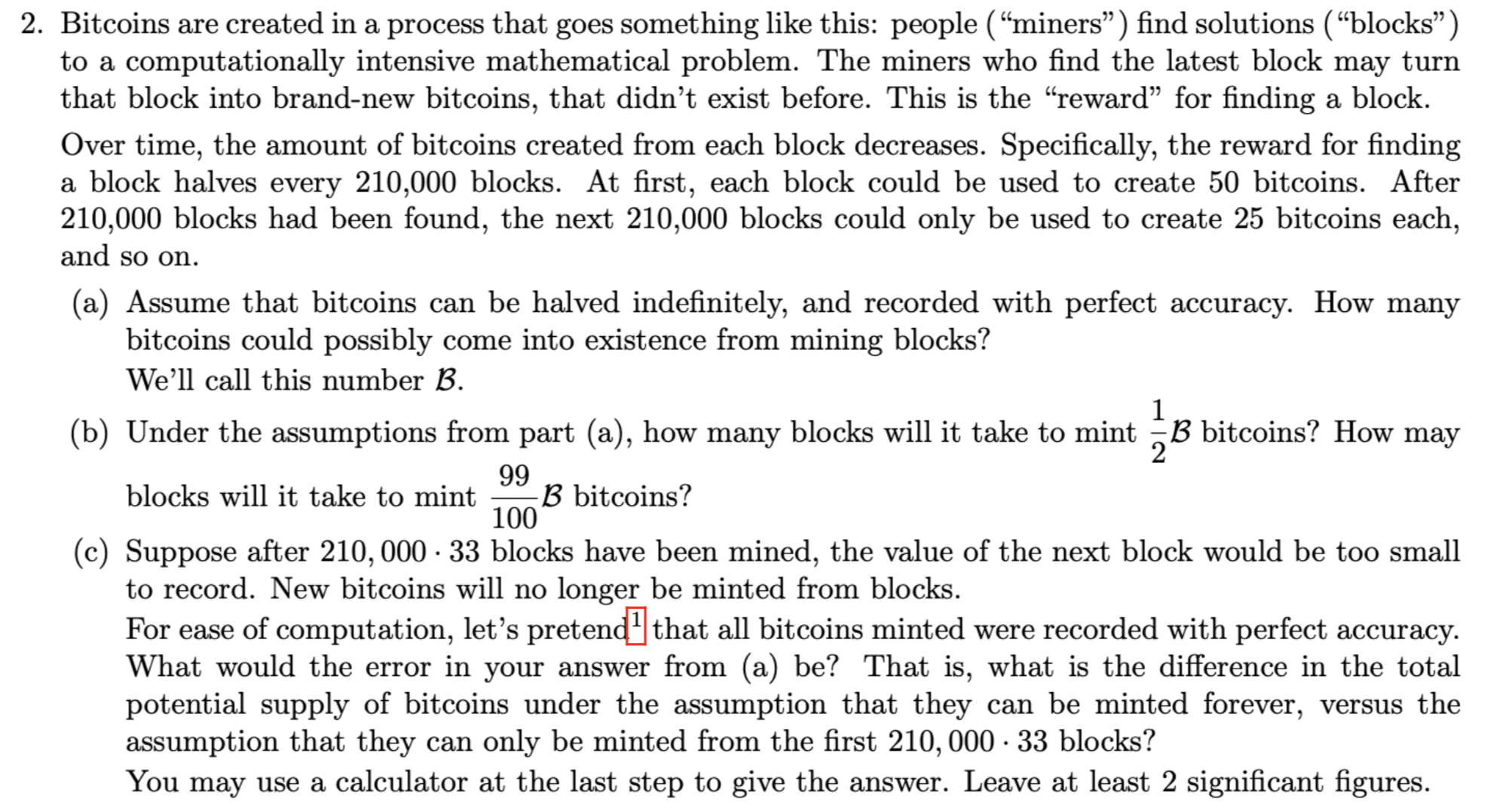Answered step by step
Verified Expert Solution
Question
1 Approved Answer
2. Bitcoins are created in a process that goes something like this: people (miners) find solutions (blocks) to a computationally intensive mathematical problem. The

2. Bitcoins are created in a process that goes something like this: people (miners) find solutions (blocks) to a computationally intensive mathematical problem. The miners who find the latest block may turn that block into brand-new bitcoins, that didn't exist before. This is the "reward" for finding a block. Over time, the amount of bitcoins created from each block decreases. Specifically, the reward for finding a block halves every 210,000 blocks. At first, each block could be used to create 50 bitcoins. After 210,000 blocks had been found, the next 210,000 blocks could only be used to create 25 bitcoins each, and so on. (a) Assume that bitcoins can be halved indefinitely, and recorded with perfect accuracy. How many bitcoins could possibly come into existence from mining blocks? We'll call this number B. (b) Under the assumptions from part (a), how many blocks will it take to mint blocks will it take to mint B bitcoins? 99 100 B bitcoins? How may (c) Suppose after 210,000 33 blocks have been mined, the value of the next block would be too small to record. New bitcoins will no longer be minted from blocks. For ease of computation, let's pretend 1 that all bitcoins minted were recorded with perfect accuracy. What would the error in your answer from (a) be? That is, what is the difference in the total potential supply of bitcoins under the assumption that they can be minted forever, versus the assumption that they can only be minted from the first 210,000 33 blocks? You may use a calculator at the last step to give the answer. Leave at least 2 significant figures.
Step by Step Solution
There are 3 Steps involved in it
Step: 1

Get Instant Access to Expert-Tailored Solutions
See step-by-step solutions with expert insights and AI powered tools for academic success
Step: 2

Step: 3

Ace Your Homework with AI
Get the answers you need in no time with our AI-driven, step-by-step assistance
Get Started


